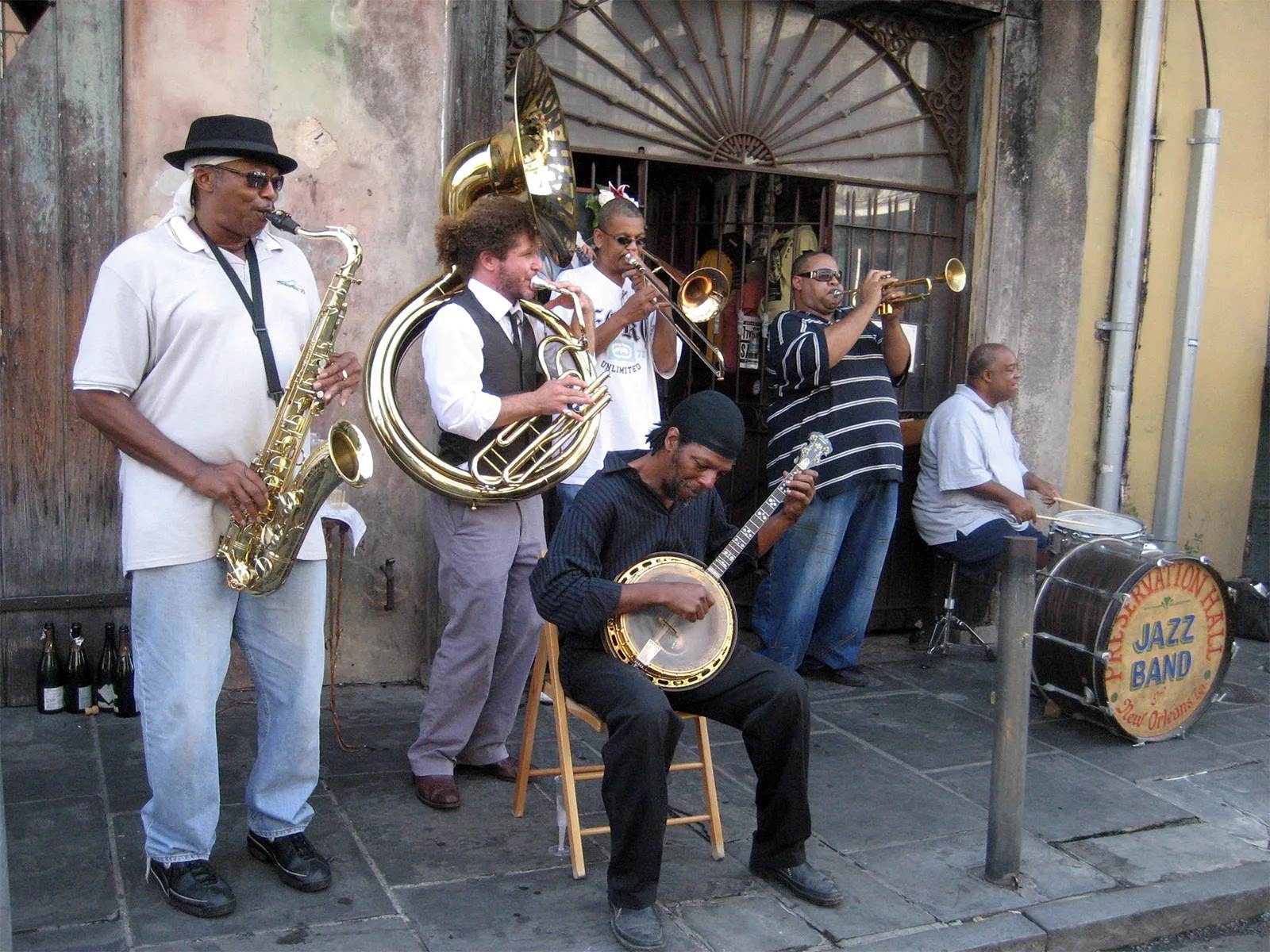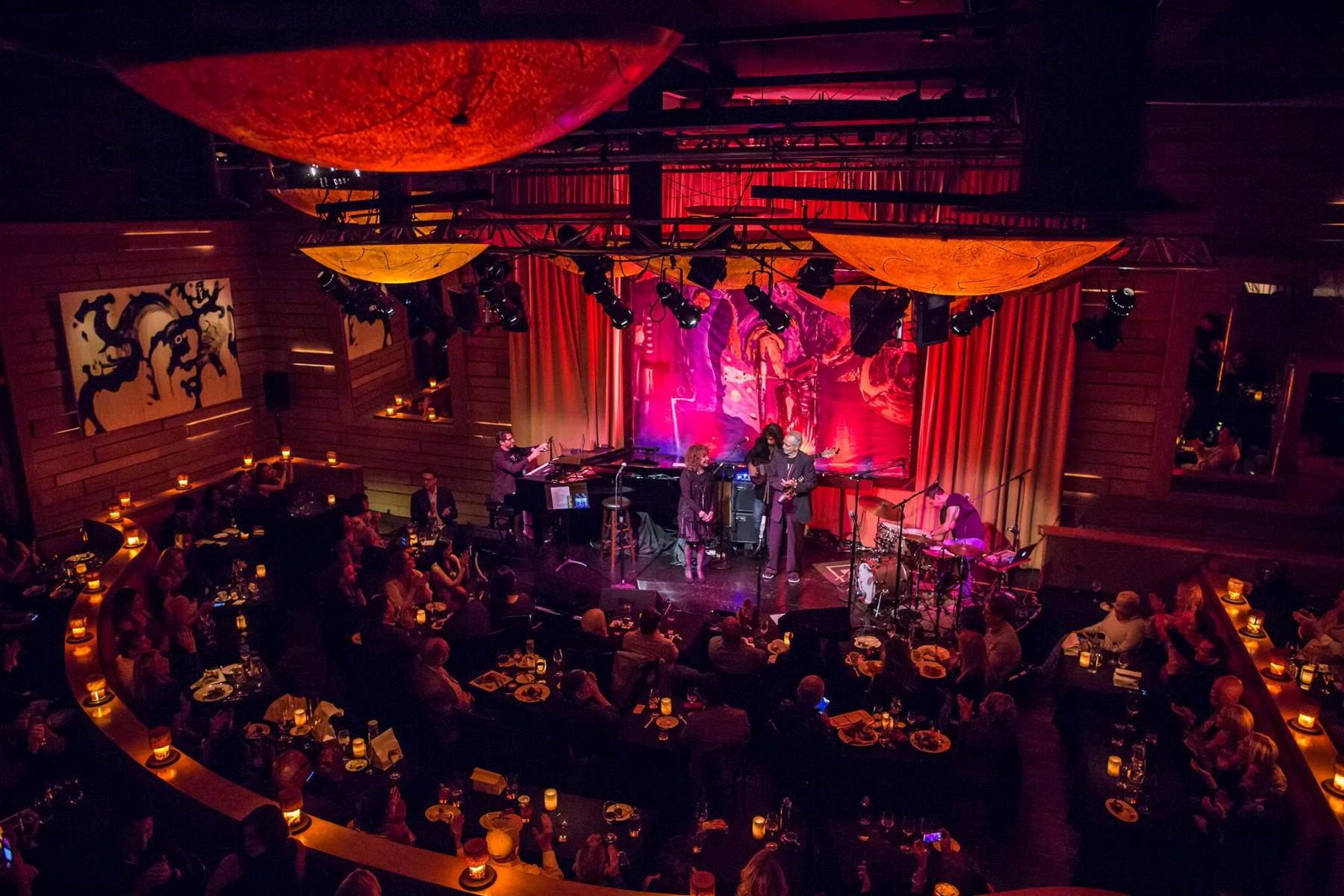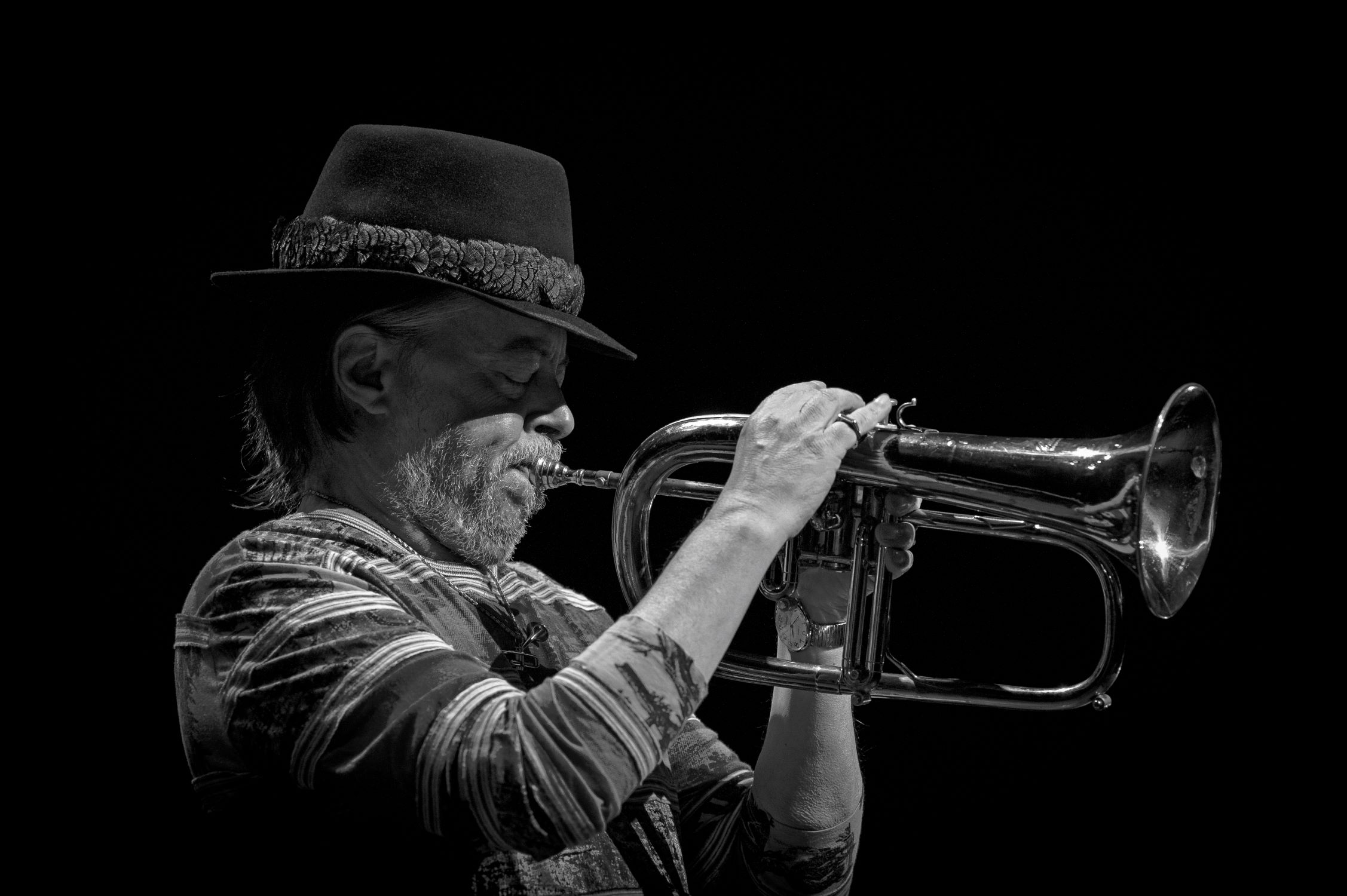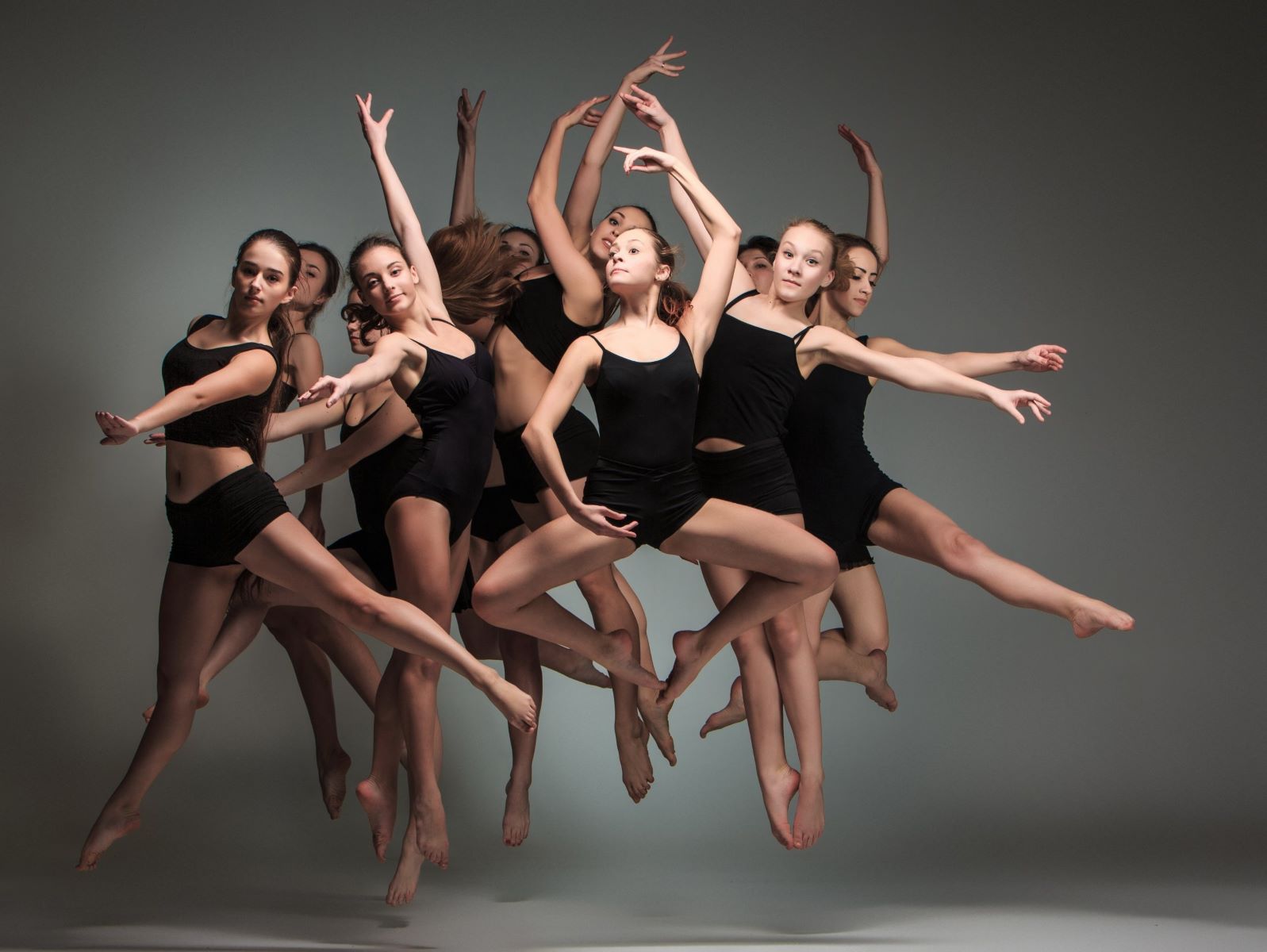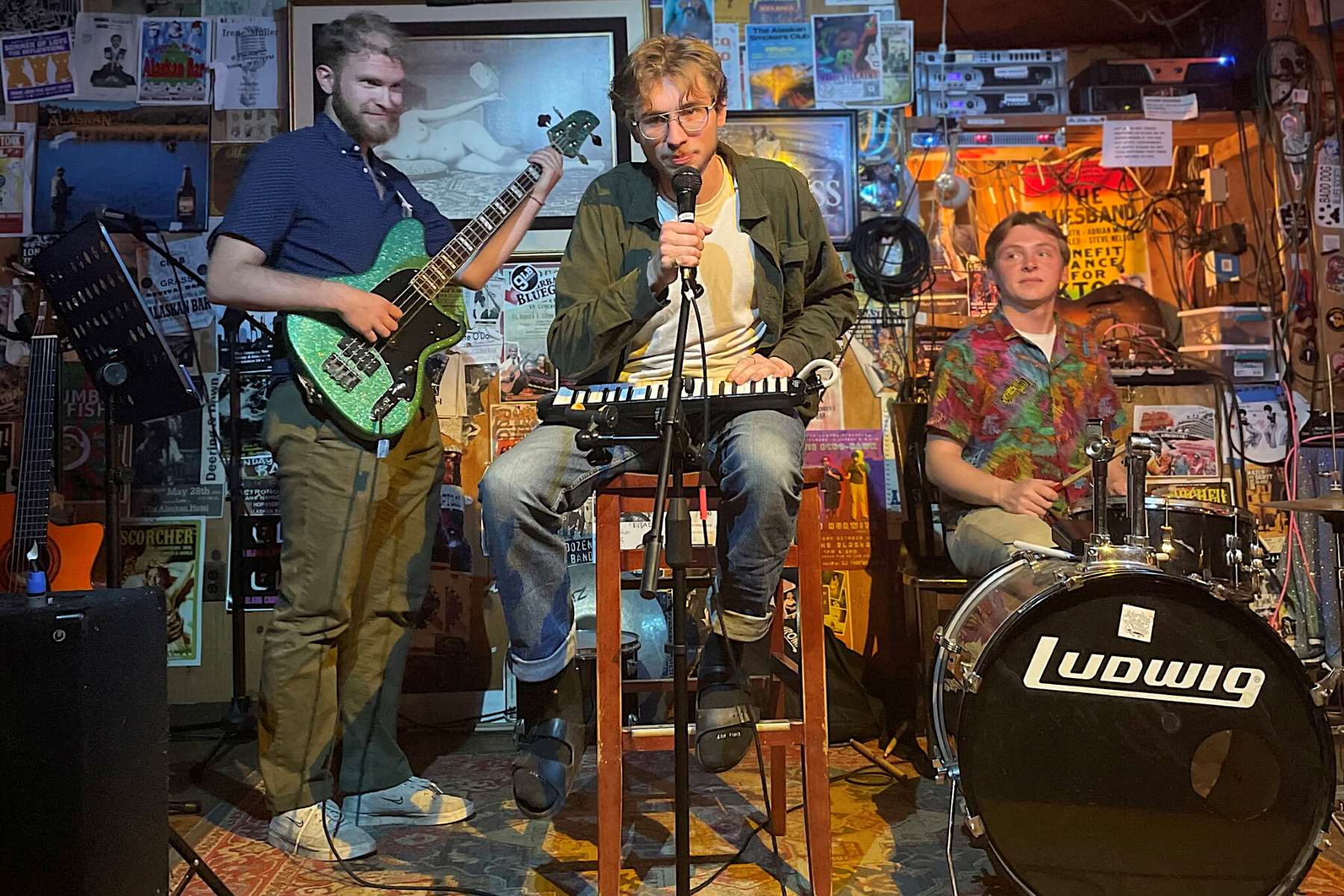

Jazz
What Is The Jazz Age
Modified: February 24, 2024
Discover the vibrant and transformative Jazz Age, a period of cultural revolution and musical innovation led by the captivating sounds of jazz music. Explore the origins, impact, and enduring legacy of this defining era in American history.
(Many of the links in this article redirect to a specific reviewed product. Your purchase of these products through affiliate links helps to generate commission for AudioLover.com, at no extra cost. Learn more)
Table of Contents
Introduction
The Jazz Age, also known as the Roaring Twenties, was a vibrant and transformative era in American history. It was a time of social, cultural, and artistic explosion that gave birth to a new form of music known as jazz. Spanning from the end of World War I to the early years of the Great Depression, the Jazz Age was characterized by an exuberant attitude towards life, a spirit of rebellion, and a breaking of traditional societal norms.
Jazz, with its syncopated rhythms, improvisation, and lively melodies, became the soundtrack of the Jazz Age. It reflected the changing attitudes of a younger generation who were seeking liberation and self-expression. The music captivated audiences, both black and white, and soon spread from its birthplace in New Orleans to other major cities across the United States.
The Jazz Age was not just about music; it was a cultural revolution. The rise of the automobile and the availability of mass-produced goods allowed for a new consumer culture to flourish. Young people flocked to dance halls and speakeasies, embracing a carefree lifestyle and flouting the strict social norms of previous generations. This newfound freedom also extended to women, who experienced greater independence and participation in society.
The impact of the Jazz Age extended beyond music and culture, influencing art, fashion, and literature. The vibrant energy of jazz inspired artists such as Aaron Douglas, who depicted the spirit of the Harlem Renaissance in his powerful paintings. Fashion took a dramatic turn, with flapper dresses, bobbed hair, and bold makeup becoming the style of the era. And in literature, authors like F. Scott Fitzgerald immortalized the Jazz Age in works such as “The Great Gatsby,” a novel that captured the excesses and disillusionment of the time.
However, the Jazz Age was not without its conflicts and tensions. Prohibition, the nationwide ban on the production and sale of alcoholic beverages, led to the rise of illegal speakeasies and organized crime. Racial tensions persisted despite the cultural exchange happening through jazz and the Harlem Renaissance. And ultimately, the economic crash of 1929 brought an end to the roaring prosperity of the 1920s.
Despite its relatively short lifespan, the legacy of the Jazz Age lives on. Jazz continues to be celebrated and enjoyed worldwide, and its influence can be heard in modern music genres such as rock, R&B, and hip-hop. The Jazz Age represents a time of artistic innovation, social change, and cultural renaissance, reminding us of the power of music to shape and reflect the spirit of an era.
Origins of the Jazz Age
The origins of the Jazz Age can be traced back to the early 20th century and the city of New Orleans, Louisiana. At that time, New Orleans was a melting pot of different cultures, including African, European, and Caribbean influences. The diverse population and the presence of a robust music scene created the perfect breeding ground for a new style of music to emerge.
Jazz, as we know it today, was born out of a blend of different musical traditions, including African rhythms, European classical music, and the blues. African Americans, who were an integral part of the cultural fabric of New Orleans, played a significant role in shaping this new form of music. They brought their musical traditions, such as call and response, polyrhythms, and improvisation, which became essential elements of jazz.
As the music spread beyond the borders of New Orleans, it underwent further evolution and experimentation. Jazz bands began to form in other cities, such as Chicago and New York, and the music started gaining popularity among a wider audience. The widespread availability of phonographs and radio broadcasts helped to popularize jazz and bring it into the homes of people across the country.
One of the defining characteristics of jazz is its improvisational nature. Musicians would often engage in jam sessions, where they would spontaneously create music on the spot, building upon each other’s ideas. This element of improvisation allowed for a sense of freedom and creativity that was unprecedented in the world of music.
In addition to its musical innovations, the Jazz Age was also shaped by the social and cultural changes happening at the time. The end of World War I brought about a sense of optimism and a desire for new experiences. The Prohibition era, which prohibited the sale and consumption of alcohol, gave rise to illicit nightclubs and speakeasies, where jazz music thrived.
The popularity of jazz grew rapidly, attracting both black and white audiences. Jazz bands, consisting of both black and white musicians, performed together, breaking down racial barriers and creating a sense of unity through music. This cultural exchange through music played a crucial role in shaping the Jazz Age and promoting a spirit of inclusivity and acceptance.
Overall, the Jazz Age was a time of musical and cultural revolution. The origins of jazz in the vibrant city of New Orleans, coupled with the social and cultural changes of the era, set the stage for the birth of a new movement that would leave a lasting legacy in American history.
Impact of Jazz on Music and Culture
Jazz revolutionized the music world and had a profound impact on both the art form itself and the broader culture of the Jazz Age. Its influence can still be felt today in various music genres and cultural expressions.
First and foremost, jazz brought a new level of musicality to the forefront. It introduced complex harmonies, syncopated rhythms, and improvisation, pushing the boundaries of what was traditionally considered “proper” music. Jazz musicians found freedom in expressing themselves through their instruments, exploring new melodic and rhythmic possibilities.
Jazz also played a pivotal role in breaking down racial barriers. At a time when segregation was prevalent, jazz became a platform for black and white musicians to collaborate and perform together. Through the language of music, racial boundaries were crossed, fostering a sense of unity and promoting cultural exchange.
The impact of jazz extended beyond the realm of music. It influenced fashion, art, and dance. The energetic rhythms of jazz music inspired new dance styles like the Charleston and the Lindy Hop. These dances embodied the spirit of the Jazz Age, with their fast-paced movements and exuberant energy.
In the world of fashion, the Jazz Age brought about a significant transformation. The flapper style, characterized by short dresses, bobbed hair, and bold accessories, became emblematic of the era. The fashion of the Jazz Age reflected the newfound freedom and rebellious spirit of women at the time.
Jazz also had a profound impact on literature and the arts. Writers, such as F. Scott Fitzgerald, Ernest Hemingway, and Langston Hughes, were inspired by the energy and decadence of the Jazz Age. Their works captured the essence of the era, exploring themes of excess, disillusionment, and the pursuit of the American Dream.
Moreover, jazz became a symbol of cultural identity for African Americans. It gave voice to the experiences, struggles, and aspirations of the black community. Jazz music expressed a sense of resilience and the desire for equality, contributing to the broader civil rights movement of the 20th century.
The impact of jazz on music and culture continues to reverberate in modern times. Jazz remains a vibrant and influential genre, evolving and incorporating new elements while preserving its core improvisational spirit. Its influence can be heard in various music genres, from rock and R&B to hip-hop and electronic music.
Overall, jazz’s impact on music and culture during the Jazz Age was transformative. It pushed boundaries, challenged conventions, and provided a platform for expression and cultural exchange. Its influence not only shaped the Jazz Age but also left a lasting legacy that continues to inspire and captivate audiences around the world.
Key Figures of the Jazz Age
The Jazz Age was home to a plethora of talented and innovative musicians who shaped the landscape of jazz and left an indelible mark on the music world. These individuals helped define the genre and propelled it to new heights of popularity and influence. Here are some key figures of the Jazz Age:
- Louis Armstrong: Known as the father of jazz, Louis Armstrong was a trumpeter, vocalist, and composer whose innovative playing style and charismatic personality helped popularize jazz music. His virtuosic trumpet solos and powerful vocal performances, such as “What a Wonderful World,” remain iconic to this day.
- Duke Ellington: A legendary pianist, composer, and bandleader, Duke Ellington had a career that spanned decades. His orchestra, the Duke Ellington Orchestra, featured some of the greatest jazz musicians of the time and became a major force in the swing era. Ellington’s compositions, including “Take the A Train” and “Mood Indigo,” are considered jazz standards.
- Bessie Smith: Known as the Empress of the Blues, Bessie Smith was a powerhouse vocalist who brought raw emotion and intensity to her performances. Her powerful voice and commanding stage presence made her one of the most popular blues and jazz singers of the era. Smith’s recordings, such as “Downhearted Blues” and “St. Louis Blues,” showcased her unparalleled vocal talent.
- Count Basie: A pianist, bandleader, and composer, Count Basie was a central figure in the swing era. His Count Basie Orchestra was known for its tight ensemble playing, infectious rhythm, and memorable solos. Basie’s arrangements and compositions, like “Jumpin’ at the Woodside” and “One O’Clock Jump,” helped define the big band sound of the Jazz Age.
- Billie Holiday: With her unique vocal style and emotive delivery, Billie Holiday remains one of the most influential jazz singers of all time. Known for her haunting renditions of songs like “Strange Fruit” and “God Bless the Child,” Holiday’s voice conveyed deep emotion and vulnerability, making her a true jazz icon.
These are just a few examples of the remarkable musicians who played a pivotal role in shaping the Jazz Age. Each artist brought their own unique style and contributed to the diversity and richness of jazz music. Their contributions continue to inspire and resonate with audiences, ensuring that their musical legacies endure for generations to come.
Prohibition and the Jazz Age
One of the defining factors of the Jazz Age was the nationwide ban on the production, sale, and distribution of alcoholic beverages, known as Prohibition. Enforced from 1920 to 1933, Prohibition aimed to curb social problems associated with alcohol abuse but had unintended consequences that greatly impacted the cultural landscape of the time.
Prohibition fueled the rise of illegal alcohol establishments known as speakeasies. These underground, hidden bars quickly became popular social venues where people could gather to drink, socialize, and enjoy live music, primarily jazz. Speakeasies became hotspots for the Jazz Age, as they provided a space for both musicians and audiences to embrace the carefree spirit of the era.
Jazz music and the culture surrounding it thrived in the illicit atmosphere of speakeasies. Musicians performed energetic and lively jazz tunes, creating an electrifying ambiance that drew in crowds. Jazz became the soundtrack of prohibition-era nightlife, with its infectious rhythms and improvisational elements reflecting the rebellious nature of those who defied the law to enjoy a night of revelry.
In addition to speakeasies, the influence of prohibition on the Jazz Age extended to the economic sphere. The illegal production and distribution of alcohol created opportunities for organized crime to flourish. Gangsters such as Al Capone and Dutch Schultz became notorious figures, controlling the illegal alcohol trade in cities like Chicago and New York. These criminal enterprises often patronized and supported jazz artists, becoming important sources of income for many musicians.
Ironically, the prohibition of alcohol inadvertently propelled the popularity of jazz. The demand for live entertainment in speakeasies and clubs skyrocketed, with jazz bands and solo artists finding lucrative gigs in these establishments. The exuberant and lively nature of jazz provided an escape from the doldrums of daily life during Prohibition, and the music’s infectious rhythms and improvisation offered a vibrant soundtrack to the era’s underground social scene.
While Prohibition ended in 1933 with its repeal, the impact it had on the Jazz Age was significant. It helped solidify jazz as a quintessential American art form and contributed to the image of the Jazz Age as a time of rebellion, hedonism, and cultural transformation. The association between jazz and the speakeasies of the Prohibition era remains a significant part of the genre’s history and the broader cultural narrative of the Jazz Age.
The Harlem Renaissance and the Jazz Age
The Jazz Age coincided with another significant movement in American history known as the Harlem Renaissance. The Harlem Renaissance was a cultural and artistic movement centered in Harlem, New York City, that celebrated African American art, literature, music, and intellectualism. It played a vital role in shaping the cultural fabric of the Jazz Age.
Harlem became a cultural epicenter and a haven for African American artists, musicians, writers, and intellectuals during the 1920s. It offered a platform for creative expression and a space for marginalized voices to be heard. The thriving jazz scene of Harlem was an integral part of this cultural revolution, with legendary nightclubs such as the Cotton Club and the Apollo Theater hosting performances by leading jazz artists of the time.
Jazz music was at the heart of the Harlem Renaissance, representing the spirit and vitality of the era. It became a means for African Americans to express their identity, celebrate their heritage, and challenge racial stereotypes. Jazz artists such as Duke Ellington, Louis Armstrong, and Bessie Smith became prominent figures during this period, using their music to break down racial barriers and empower the black community.
Moreover, jazz became a symbol of ethnic pride during the Harlem Renaissance. It celebrated African American cultural contributions and acted as a form of resistance against societal prejudice and oppression. The syncopated rhythms, improvisation, and call and response elements of jazz were rooted in African musical traditions, allowing African Americans to reconnect with their cultural roots and assert their identity.
Both the literary and visual arts of the Harlem Renaissance were deeply influenced by jazz music. Writers such as Langston Hughes and Zora Neale Hurston incorporated the rhythms and themes of jazz into their poetry, short stories, and novels, capturing the essence and energy of the Jazz Age. Artists such as Aaron Douglas incorporated jazz motifs and African iconography in their vibrant paintings, reflecting the cultural fusion happening in Harlem.
The Harlem Renaissance and the Jazz Age were deeply interwoven, mutually influencing and inspiring each other. The cultural exchange that took place in Harlem helped propel the jazz movement to new heights of popularity and artistic innovation. Jazz music, with its infectious rhythms and emotive melodies, provided a soundtrack to the artistic and intellectual flourishing happening in Harlem.
Although the Harlem Renaissance and the Jazz Age had their own distinct characteristics and contributions, they both represented a desire for social and cultural progress. They challenged societal norms and pushed for inclusivity, creating platforms for marginalized voices and redefining American culture. Together, the Harlem Renaissance and the Jazz Age stand as powerful symbols of African American achievement, creative expression, and cultural revolution during one of the most dynamic periods in American history.
The Great Gatsby and the Jazz Age
One of the most iconic literary works associated with the Jazz Age is F. Scott Fitzgerald’s novel, “The Great Gatsby.” Published in 1925, the novel captures the spirit and excesses of the era, providing a glimpse into the glamorous and tumultuous world of the Jazz Age.
“The Great Gatsby” delves into the lives of affluent individuals living on Long Island, New York, during the 1920s. The novel explores themes of wealth, love, social class, and the unattainable American Dream. It serves as a social critique, revealing the superficiality and moral decay that lay beneath the lavish lifestyles of the Jazz Age elite.
Fitzgerald’s depiction of the Jazz Age in “The Great Gatsby” is often synonymous with the era itself. The novel portrays the excesses and decadence of the time, with extravagant parties, lavish lifestyles, and a pervasive atmosphere of hedonism. The characters in the novel, such as Jay Gatsby and Daisy Buchanan, embody the dreamers and social climbers who sought wealth, success, and love in the midst of this tumultuous era.
Jazz music plays a significant role in “The Great Gatsby,” serving as both a backdrop to the story and a reflection of the characters’ identities. The lively rhythms and energetic melodies of jazz are ever-present in the parties hosted by Gatsby. The music captures the essence of the Jazz Age’s carefree spirit and its role as a means of temporary escape from the realities of a changing world.
Fitzgerald’s writing style in “The Great Gatsby” mirrors the syncopated rhythms and improvisational nature of jazz music. He employs vivid descriptions, lyrical language, and carefully crafted prose, creating a narrative that is both poetic and evocative. The novel’s prose dances and moves like a jazz composition, immersing readers in the vibrant and chaotic world of the Jazz Age.
“The Great Gatsby” also explores the meaning of the American Dream during the Jazz Age. The characters in the novel pursue the ideal of wealth and success, yet their pursuits often lead to disillusionment and moral bankruptcy. Fitzgerald’s portrayal of the Jazz Age’s obsession with materialism and the pursuit of happiness resonated with readers then and continues to resonate today.
Through its themes, characters, and evocative portrayal of the Jazz Age, “The Great Gatsby” has become a symbol of an era characterized by both glamorous excess and disillusionment. The novel serves as a time capsule, capturing the cultural and social landscape of the 1920s and providing a window into the hopes and anxieties of a generation.
While “The Great Gatsby” was initially met with mixed reviews and modest commercial success upon its release, it has since gained recognition as one of the greatest American novels of the 20th century. Its portrayal of the Jazz Age continues to captivate readers, offering a glimpse into the dazzling and tragic world of a bygone era.
Decline of the Jazz Age
Like any cultural movement, the Jazz Age eventually came to an end, giving way to new societal, economic, and artistic shifts. The decline of the Jazz Age can be attributed to several factors that contributed to its gradual fading from the cultural forefront.
One of the key factors that led to the decline of the Jazz Age was the onset of the Great Depression in 1929. The economic crash had a significant impact on the music industry, leading to a decline in record sales, the closure of clubs and venues, and a decrease in opportunities for musicians. As people faced financial hardships, the carefree spirit and lavishness associated with the Jazz Age became less attainable and less desirable.
Additionally, the rise of new music genres and cultural shifts played a role in the decline of jazz’s dominance. The swing era emerged in the late 1930s, bringing with it big band music and a shift towards more orchestrated and polished sounds. This new style of music appealed to a broader audience, gradually overshadowing the raw and improvisational nature of jazz.
The changing tastes and preferences of the younger generation also contributed to the decline of the Jazz Age. As the 1930s progressed, swing and other forms of popular music gained popularity among the youth, who sought a different sound and style to identify with. Jazz, which had once represented rebellion and youthful exuberance, began to be seen as belonging to an older generation.
Furthermore, the onset of World War II in the early 1940s brought about significant social and cultural changes. The focus shifted from entertainment and indulgence to the realities of war and global conflicts. The world was experiencing a different level of upheaval, and the vibrant spirit of the Jazz Age seemed distant and disconnected from the struggles and challenges of the time.
While jazz music continued to evolve and adapt to new styles, it no longer held the same widespread cultural influence that it had during the Jazz Age. The popularity of other genres, such as rock and roll, R&B, and later, hip-hop, pushed jazz further into the periphery of popular music.
However, it is important to note that the decline of the Jazz Age did not diminish its significance and impact on the cultural fabric of the United States and the world. Jazz, with its rich history and legacy, continues to be celebrated and cherished by enthusiasts, musicians, and historians. Its influence can still be heard in modern music and its deeper connection to the struggles and triumphs of African Americans remains an important part of its enduring legacy.
The decline of the Jazz Age marked the end of an era characterized by exuberance, social change, and artistic innovation. Though the Jazz Age itself may have passed, its cultural impact and the musical brilliance of jazz continue to resonate, inspiring generations to appreciate its unique contributions to American history and the world of music.
Legacy of the Jazz Age
The Jazz Age left an enduring and influential legacy that continues to shape music, culture, and society to this day. Its impact can be felt in various aspects of life and remains a testament to the remarkable cultural revolution that took place during the 1920s. Here are some key facets of the Jazz Age’s lasting legacy:
Musical Innovation: The Jazz Age was a crucible of musical innovation and experimentation. Jazz introduced new rhythms, harmonies, and improvisational techniques that transformed the way music was created and perceived. Its influence can be heard in a wide range of genres, including rock, R&B, and hip-hop. Jazz’s spirit of invention and improvisation continues to inspire musicians to push boundaries and innovate in their own art.
Cultural Transformation: The Jazz Age challenged traditional societal norms and helped pave the way for social change. It celebrated African American cultural contributions, fostered racial integration, and provided a platform for marginalized voices to be heard. The era’s emphasis on individualism and freedoms influenced subsequent decades, contributing to the ongoing fight for civil rights and equality.
Revolutionary Art Forms: The Jazz Age witnessed a flourishing of artistic expression in various forms. From the vibrant paintings of the Harlem Renaissance to the lyrical poetry of Langston Hughes, jazz became a source of inspiration for artists across different mediums. The era’s artistic output continues to captivate audiences, offering a window into the cultural renaissance that defined the time.
Challenging Literary Works: Writers of the Jazz Age, such as F. Scott Fitzgerald and Langston Hughes, produced enduring literary works that captured the essence of the era. Their novels, poems, and essays explored themes of decadence, disillusionment, and the pursuit of the American Dream. These works continue to be studied and celebrated for their profound insights into the human condition and the complexities of the Jazz Age.
Social and Political Impact: The struggles and triumphs of the Jazz Age helped galvanize the civil rights movement and furthered the fight for racial equality. The era’s celebration of African American culture and contributions paved the way for greater recognition and opportunities for black artists and intellectuals. The Jazz Age also left a lasting cultural imprint, forging a new and more inclusive American identity.
Global Influence: The Jazz Age had a global impact, spreading its influence beyond the United States. Jazz music became a global phenomenon, inspiring musicians and audiences across continents. It facilitated cultural exchange and gave rise to new musical styles and genres around the world. The Jazz Age’s legacy can be seen in the diverse and vibrant music scenes that continue to thrive internationally.
The Jazz Age stands as a testament to the transformative power of music and culture. It pushed boundaries, challenged conventions, and provided a platform for marginalized voices. With its lasting legacy, the Jazz Age continues to inspire and remind us of the remarkable cultural revolution that took place in the Roaring Twenties. It remains a beacon of artistic innovation, social change, and the resounding impact of music on society.
Conclusion
The Jazz Age was a remarkable era that reshaped American culture and left an indelible mark on the world of music. It was a time of vibrant energy, cultural revolution, and artistic innovation. The rise of jazz music, with its syncopated rhythms, improvisation, and raw emotion, embodied the spirit of the age and became a symbol of rebellion and expression.
During the Jazz Age, the boundaries of music and society were pushed to new limits. Jazz broke down racial barriers, brought diverse communities together, and provided a platform for marginalized voices. It celebrated African American culture, while also influencing and shaping popular music genres across the globe.
Prohibition, the Harlem Renaissance, and iconic literary works like “The Great Gatsby” all played significant roles in shaping the cultural landscape of the Jazz Age. Speakeasies, flapper fashion, and vibrant art movements added to the cultural tapestry of the time, creating a visual and auditory feast for the senses.
While the Jazz Age gradually declined, its influence and legacy have endured. Jazz music continues to be celebrated and enjoyed worldwide, inspiring new generations of musicians. Its impact can be heard in various music genres, from rock and R&B to hip-hop and beyond.
Moreover, the Jazz Age’s cultural contributions, social progress, and artistic achievements have had a lasting impact on American society. The era challenged norms, paved the way for civil rights advancements, and opened new avenues for artistic expression. It stands as a testament to the power of music and culture to shape and define an era.
The Jazz Age remains an enchanting chapter in American history, a time of boundless creativity, cultural exchange, and social transformation. Its legacy serves as a reminder of the transformative power of music, the drive for equality, and the pursuit of individual and artistic freedoms. The Jazz Age continues to captivate and inspire, reminding us of the enduring impact of an era that will forever be associated with the vibrant sounds of jazz.



